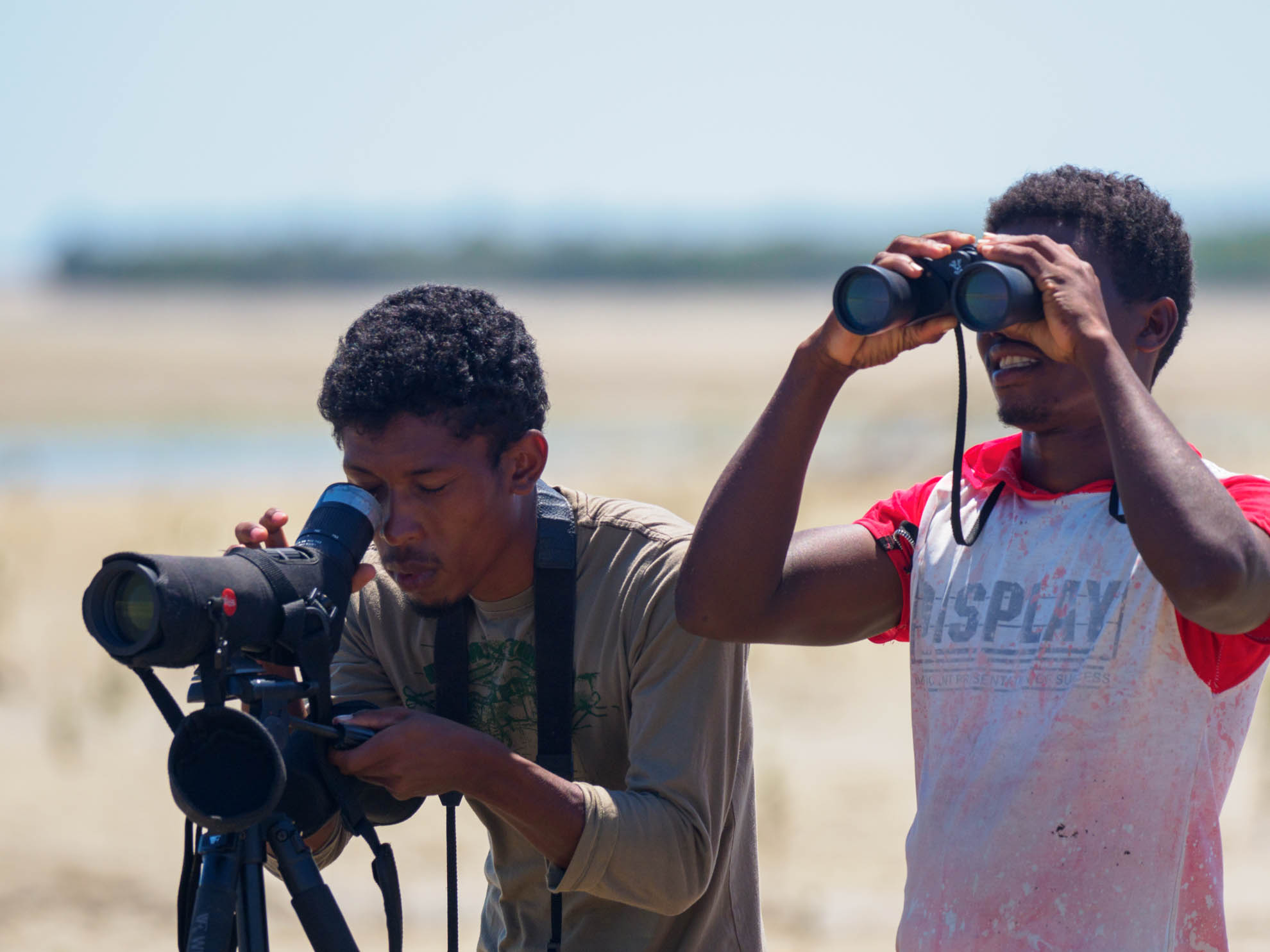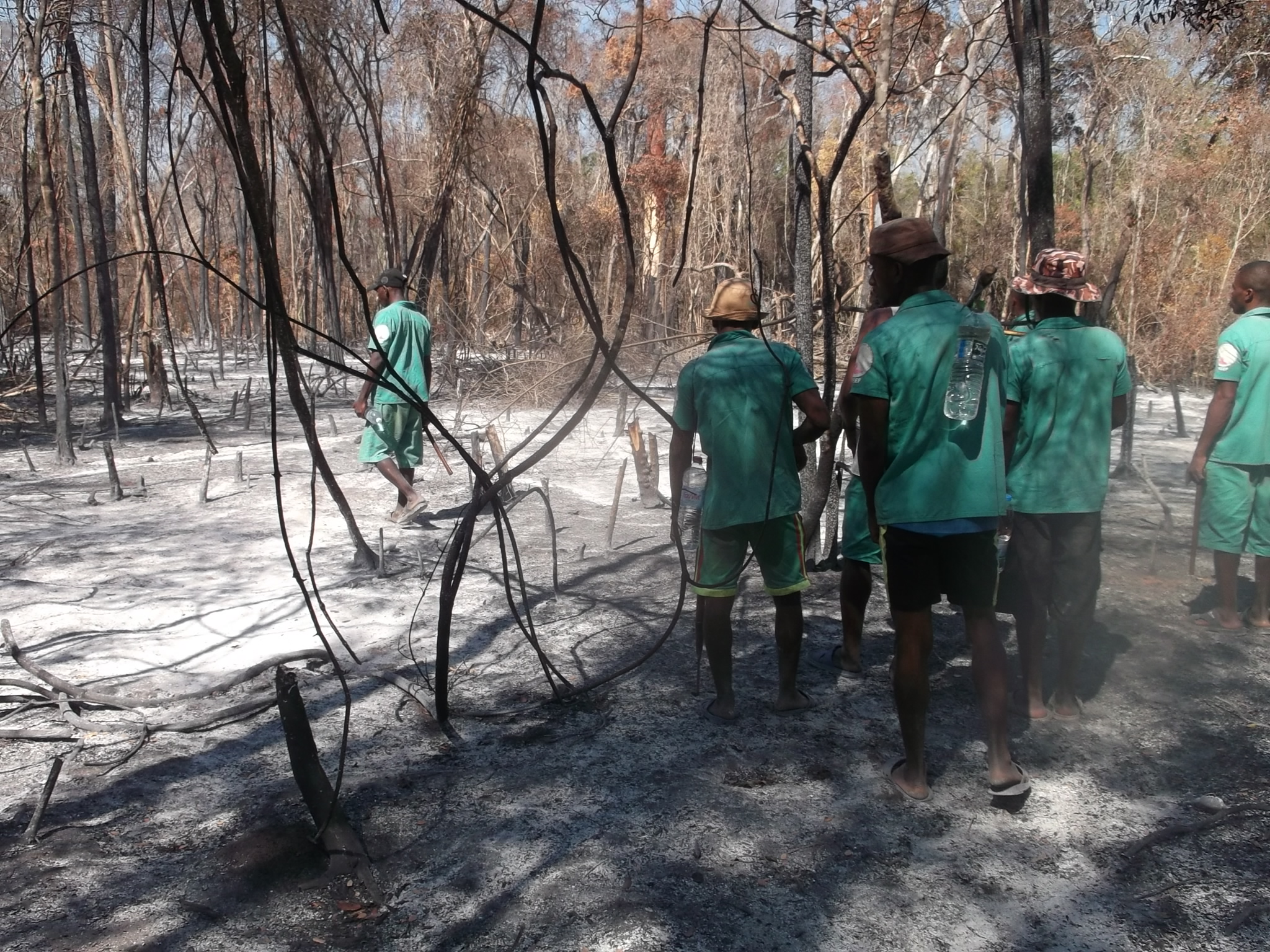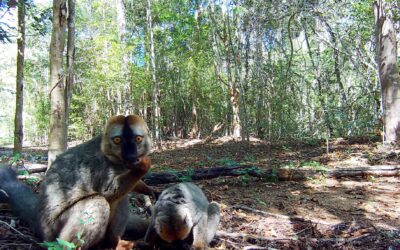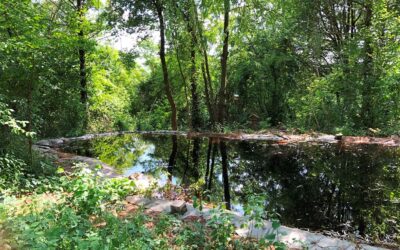Where we work
Kirindy
The Kirindy Forest is located within the Menabe-Antimena Protected Area. By working with local communities and rangers and supporting research and education, we aim to do our part to preserve the special features of this area for future generations.
The Kirindy Forest is now the largest remaining dry forest in the region. The dry forests of western Madagascar are among the most threatened habitats in the world. Their existence is therefore of fundamental importance for the conservation of Madagascar’s endemic biodiversity.
Kirindy is part of the Menabe Antimena Protected Area, which is also home to other various biologically very valuable habitats and thus a globally unique biodiversity.

The Kirindy forest and its surroundings
A map of Kirindy. Black line = boundary of the Menabe-Antimena protected area.
About Kirindy
Animals & Plants
The Kirindy Forest is one of three remaining dry forest areas in the region. Kirindy is home to over 200 different species of woody plants; some of which have not been scientifically studied to date. In addition to this remarkable diversity of plants, Kirindy’s dry forests are home to 15 species of amphibians, 54 species of reptiles, and over 80 species of birds. If we add the bird species in the mangroves and the lakes of the Menabe-Antimena Sanctuary, there are 149 bird species. The sanctuary is also home to 30 endemic mammal species. Three of these are locally endemic and are found only in the dry forests of this region. The distribution of the Northern Narrow-striped Mongoose (
Endangered giants
Baobab
The central Menabe region is famous for its baobabs. The Allee de Baobab, a cluster of trees of the genus Andansonia grandidieri, south of Kirindy, is perhaps the most frequently photographed motive in Madagascar. In fact, baobabs are also threatened with extinction.
Unique bird life
Ibis, Coua & Co
The dry forest is also home to a unique birdlife. The Madagascar ibis, as well as several species of silky cuckoo, are among the most conspicuous inhabitants and can be easily observed during a visit to Kirindy.
Ghosts of the forest
Lemurs
Kirindy is home to eight species of lemurs. Six of them are nocturnal and two are diurnal. Madame Berthe’s mouse lemur is the smallest described primate in the world. It is found only in the dry forests of the region and is now threatened with extinction. This is also true for the Verreaux’s sifaka and the red-tailed sportive lemur.
The somewhat different rat
Malagasy giant jumping rat
The Madagascar giant rat (Hypogeomys antimena) is found only in dry forests of the Menabe-Antimena Sanctuary. The animals are nocturnal and live in monogamous pairs. Due to its highly restricted range, the species is critically endangered.
Striped mongooses
Bokiboky
The narrow-striped mongoose is locally endemic to the Menabe region. Almost nothing is known about its distribution outside the Kirindy Forest. The small predators live in small groups and feed mainly on small vertebrates and insects in the leaf litter.
sometimes welcome
Fossa
While an encounter with a fossa is a unique experience for tourists, the loss of the dry forest increasingly leads to conflicts between fossas and the villagers of the region.
About Kirindy
People & Nature
The population in Menabe originally consisted of the Sakalava ethnic group. They mainly kept cattle and sheep and lived from the products of the forest. For the Sakalava, the forest is sacred to a certain extent, and the deceased are buried at sacred sites in the forest. In the last century, the population in the region increasingly mixed due to several waves of immigration from the east and the south. Today, many ethnic groups live in Menabe, including Betsileo, Merina, Tandroy, and other ethnic groups. The waves of migration were mostly due to economic factors and continue to influence the way of life of the people in the region and thus conservation.
Ethnicities
Sakalava & Co
A traditional zebu cart on the avenue de Baobab in Menabe. The population in the region originally consisted of the Sakalava. The Sakalava lived off cattle breeding and forest products. Today, many ethnic groups from other regions of Madagascar live in Menabe.
Livelihood
Forest
The forest not only plays an economic role in the region but also a cultural one. The forest is a spiritual place for the ancestors and the bereaved. The Sakalava use the forest for ceremonies and as a peaceful place for the graves of deceased family members. The picture shows a Sakalava burial site.
Logging
Rosewood
Rosewood and other valuable woods yield large sums of money and are illegally taken from the forests.
Corn & Peanuts
Slash & burn agriculture
Traditional slash-and-burn cultivation of corn and peanuts destroys the ecosystem and does not provide a long-term and sustainable solution for farming. After a short time, the soil is no longer usable. Slash-and-burn agriculture for corn and peanuts has increased dramatically, especially in recent years. Only the majestic baobabs often survive the fires.
CNFEREF & DPZ
Tourism & Research
The Kirindy Forest is a former forest concession administered by the Centre National de Formation, d’Etudes et de Recherches en Environnement et Foresterie (CNFEREF) and open to ecotourism and research. The German Primate Center (DPZ) operates a research station in the Kirindy Forest. The presence of visitors and researchers contributes significantly to the conservation of the forest and its inhabitants.
Hunting
Wildlife
Especially to the end of the dry season people poach for endangered animals and gather other forest products to make a living.
Projects
CfN in Kirindy and Menabe Antimena
“Little Rangers” &
Environmental education
Little Rangers is an environmental education camp for children and teenagers in the Kirindy Forest.
Learn more
Species conservation & Research
Research about the ecology and distribution of species is the basis for conservation.
Learn more
Don’t miss
News
Follow us on Facebook and Co., to stay up to date!
New research initiatives in our biotope project
For a good year now, the biotope renaturation on the grounds of the German Primate Center has been running with our support and we are very pleased that the first research work could already take place on site: students from the University of Göttingen investigated...
How efficient is the reforestation? Study on restoring destroyed forest areas in Kirindy
Every year, fires threaten and destroy the remaining natural habitats of Madagascar. Our project area in the Kirindy Forest is also acutely threatened by this. Due to slash-and-burn agriculture, deforestation in the region has steadily increased since 2010 and reached...
Mission on our doorstep: our biotope project in Göttingen
At the beginning of the year, we were very happy about the start of our first nature conservation project in Germany: since then, we have been supporting the renaturation of a biotope for native flora and fauna on the grounds of the German Primate Center in Göttingen....








